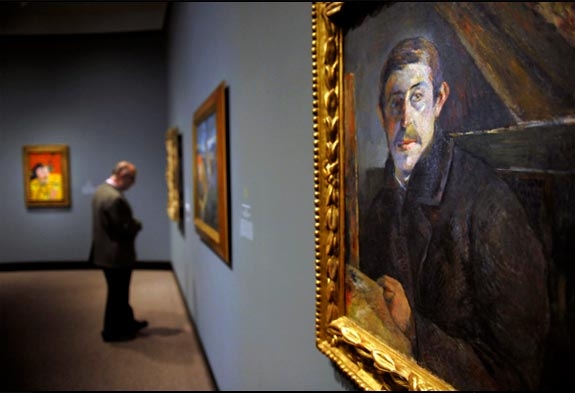The life of Paul Gauguin, dimly remembered from a bad art-appreciation class, used to go this way: Well-off stockbroker abandons wife and children to devote himself to art; decries the increasing vacuity of his impressionist forefathers; rebels against bourgeois society; leaves Paris for places warm and exotic; and eventually makes his way to Tahiti, where he discovers the primitive, reinvents himself and produces paintings of lush sensuality filled with the enticing forms of native women.
When the National Gallery teamed up with museums in Chicago and Paris more than 20 years ago to mount a monumental exhibition of works by Gauguin, it was precisely that understanding of the pioneering post-impressionist that they sought to undermine. The blockbuster 1988 exhibition, according to its organizers, aimed to stress "his production as an artist rather than the exotic, troubled and fascinating life that has attained almost mythological proportions and is better left to biography and film."
Today, with a new Gauguin exhibition opening at the National Gallery on Sunday, taste and scholarship have changed. Subtitled "Maker of Myth," the current Gauguin show is not so large or comprehensive as the one seen in 1988. Rather, it is focused on many of the things that would have been held in bad odor two decades ago: biographical tales, narrative elements and the relation between the artist and the places and people he painted.
Perhaps the old Gauguin myth did deserve a wooden stake through the heart if anyone still believed it two decades ago. Most of it was piffle and what was true - he abandoned his wife and family and slept with underage native girls - was not very flattering to Gauguin. Close attention to Gauguin's writing, including letters not published until long after his death in 1903, revealed many of the swashbuckling elements of his life story were part of a carefully calculated PR campaign, a reinvention of himself as part "savage" in an effort to create a brand for his work, which wasn't selling as well as he had hoped and had diverged from impressionism long before he made his way to places where the weather was warm and the sex plentiful.
Monday, 28 February 2011 22:22
Gauguin at the National Gallery
 A self-portrait of Paul Gauguin from 1885 is seen during a media preview showing of the "Gauguin: Maker of Myth" exhibit at The National Gallery of Art.
Matt McClain / The Washington Post
A self-portrait of Paul Gauguin from 1885 is seen during a media preview showing of the "Gauguin: Maker of Myth" exhibit at The National Gallery of Art.
Matt McClain / The Washington Post
Additional Info
- Link: Read More...
- Category: News